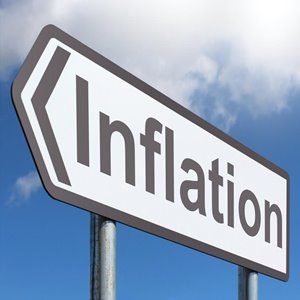We have entered the final stage of our government’s fiscal life. Annual budget deficits have become so enormous that the only way to finance them is for the Federal Reserve to increase the money supply.
The downside? We will all pay the price in the form of massive and sustained inflation.
The data reveal what the Fed has done. Total reserves — all the cash in banks’ vaults, plus banks’ deposits at the Fed — averaged about $50 billion from 1985 until August 2008.
Through the three rounds of quantitative easing following the 2008 housing crash, the Fed increased banks’ total reserves to $2.8 trillion. That’s a 5,500 percent increase!
But reserves aren’t the money supply. They are what banks use to create the money supply by making loans. Prior to 2008, banks lent around 97 percent of reserves. But since 2008, banks have been lending less than 10 percent.
Why?
Historically low interest rates have made it less profitable for banks to lend, and because of the Financial Services Regulatory Relief Act of 2006, the Fed now pays interest on banks’ deposits.
These two factors make it more attractive for banks to hold on to reserves. We aren’t seeing multi-thousand percent inflation following the multi-thousand percent increase in banking reserves because banks haven’t— yet — lent those reserves.
Other things equal, inflation ensues when the money supply grows faster than the economy. From the mid 1980s until August of 2008, the money supply grew at an average annual rate of around 5 percent. By comparison, the economy grew at an average annual rate of around 3 percent.
Other things equal, the difference in these two numbers should yield the inflation rate. Indeed, inflation averaged around 2 percent over this period.
But then came 2008. To stimulate the economy following the housing crash, the federal government ran several trillion-dollar deficits, and the Fed increased bank reserves to help fund that massive borrowing.
From the end of 2008 until February of 2020, the money supply grew at an average annual rate of around 10 percent — about double the rate prior to 2008.
Meanwhile, the economy slowed to an average 2 percent annual growth. Other things equal, this should have given us annual inflation of around 8 percent. But inflation actually declined somewhat.
Where was the inflation?
Other things weren’t equal. It appears that much of the increase in the money supply fueled exchanges of financial assets rather than exchanges of goods and services.
This resulted in growth in stock and bond prices, but not growth in goods and services prices. And because stock and bond prices are not included in inflation calculations, official inflation numbers weren’t affected.
What does this mean for the future? Eventually, the money that has made its way into stock and bond markets will make its way back into goods and services markets. This will start to happen as things begin to return to normal and people start spending more freely.
Under normal circumstances, the Fed would begin to contract reserves at this point to prevent inflation. But there is a new factor in play.
In response to the lockdown, the government will produce its first multi-trillion dollar deficit this year, and if history is any guide, multi-trillion dollar deficits will become the new normal. But no one has multi-trillions of dollars to lend to the government each year.
And this is what brings us to the final stage in the government’s fiscal life. The Fed will have to print the money the government needs to borrow. Eventually, significant inflation will follow.
Generations of spendthrift politicians have painted us into this corner. And now, we’re all going to pay, and there is nothing the Fed can do to help us.
But there is something politicians can do: Stop spending what we can’t afford.

